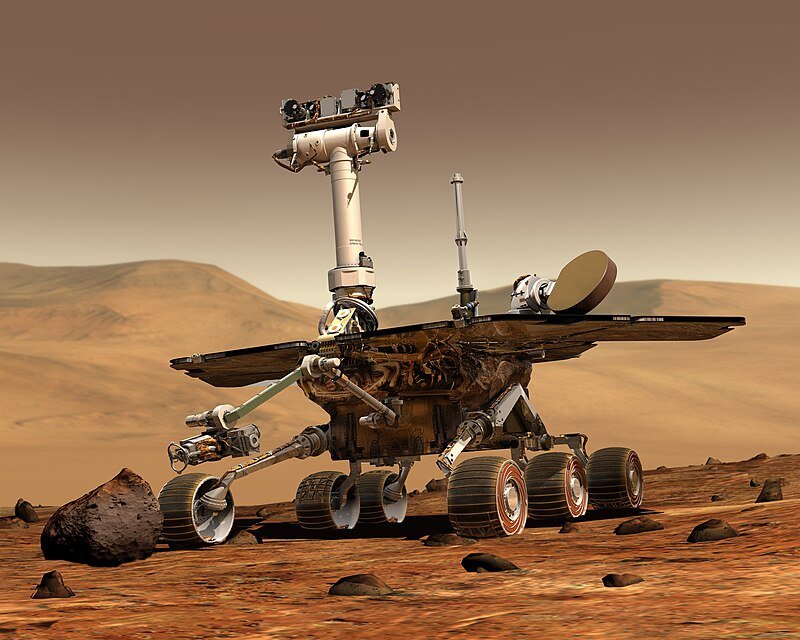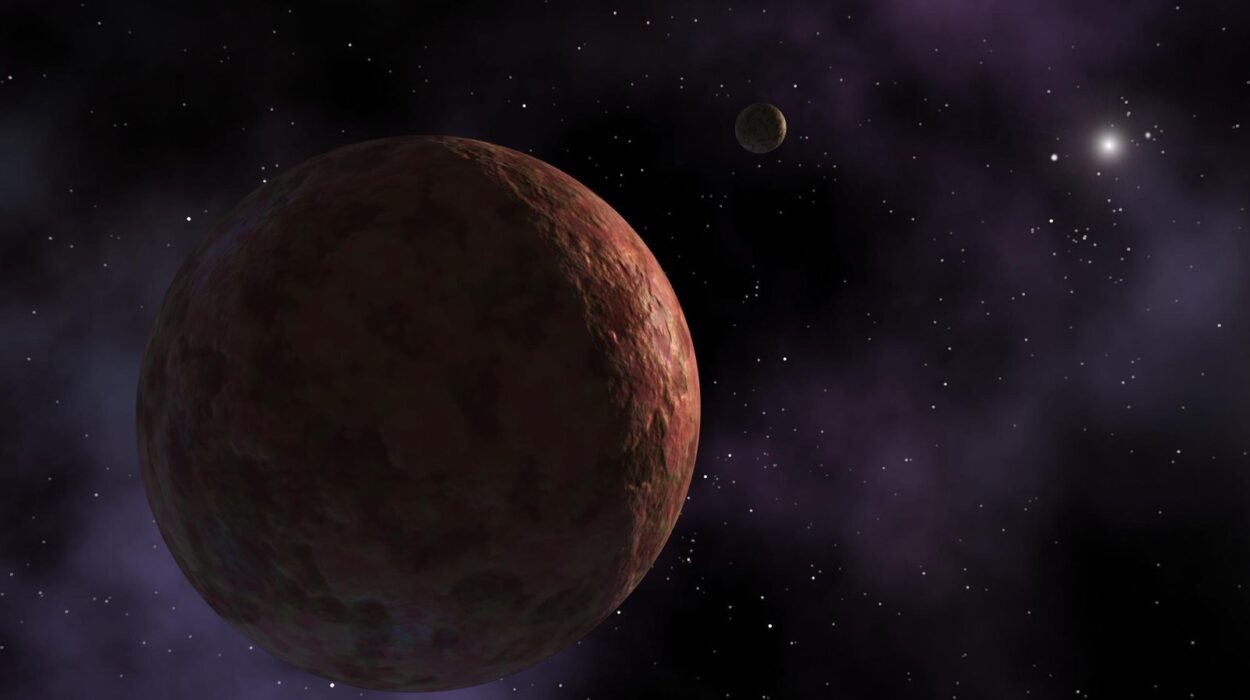Ever since humans first gazed up at the night sky, Mars has captivated our imagination. A reddish dot, bright against the darkness, it sparked ancient myths, inspired science fiction, and drove centuries of scientific curiosity. It wasn’t long after we learned to build rockets that we pointed them toward our planetary neighbor, hoping to uncover its secrets. Yet, of all the missions to explore Mars, it’s the rovers—those tireless robotic explorers—that have brought us the most intimate knowledge of this alien world.
In this deep dive, we’ll explore the incredible history, technology, and discoveries of Mars rovers. We’ll also look at how they’ve transformed our understanding of the Red Planet and why they are paving the way for future human exploration. Buckle up for an interplanetary journey across dusty plains and ancient craters, led by some of the most sophisticated machines ever built!
Why Mars?
Before we talk about the rovers themselves, it’s worth asking: Why is Mars such a big deal? Out of all the planets in our solar system, why has it been the focus of so many missions, movies, and dreams?
The short answer: Mars is the most Earth-like planet we know of. It has seasons, polar ice caps, weather (including dust storms), volcanoes, valleys, and canyons. Long ago, it may have had rivers, lakes, or even oceans. If life ever evolved anywhere else in our solar system, Mars is a pretty good candidate.
But Mars isn’t exactly cozy. The air is thin (about 1% of Earth’s atmosphere), and it’s mostly carbon dioxide. The surface is freezing, averaging -80 degrees Fahrenheit (-60 degrees Celsius), and dust storms can blanket the entire planet. Nevertheless, its intriguing history and potential for past life make Mars one of humanity’s most compelling destinations.
The Early Years—Mars Rover Pioneers
Sojourner: The First Rolling Robot on Mars
Our robotic adventure on Mars began humbly. In 1997, NASA’s Pathfinder mission delivered the first rover, Sojourner, to the Red Planet. Weighing just 23 pounds (10.6 kilograms) and about the size of a microwave oven, Sojourner was small but mighty.
She was part of a mission designed to prove that you could land a spacecraft on Mars using innovative (and cheaper) techniques—specifically, airbags to cushion the landing. Sojourner was delivered by the Pathfinder lander, which became the Carl Sagan Memorial Station. Together, they captured breathtaking photos and conducted valuable scientific experiments.
Sojourner spent 83 days exploring the Ares Vallis region, analyzing rocks and soil. Though tiny, she proved that mobility was a game-changer. She showed that a rover could study a variety of sites rather than being stuck in one spot like earlier landers.
Notable Achievements:
- Proved that rovers could navigate Martian terrain.
- Analyzed the composition of rocks, hinting at Mars’s ancient environmental history.
- Captured iconic images that brought Mars closer to home.
Spirit and Opportunity—The Twin Wonders
After Sojourner, NASA set its sights on bigger things. The Mars Exploration Rover (MER) program launched two much larger, more advanced rovers: Spirit and Opportunity.
Spirit (MER-A)
Spirit landed in Gusev Crater in January 2004, a place scientists believed was once a lakebed. The hope was that Spirit would find evidence of ancient water. And she did—though not at first. Early in her mission, Spirit found volcanic rocks, not the sedimentary ones they expected. But after months of exploring, she hit scientific paydirt: rocks altered by water, silica-rich deposits, and mineral veins that suggested past hydrothermal activity.
Spirit was supposed to last 90 days. Instead, she roved for over six years! In 2009, she got stuck in soft soil, and despite months of attempts to free her, NASA eventually declared the mission over in 2011.
Opportunity (MER-B)
If Spirit was the scrappy underdog, Opportunity became the golden child of the rover family. She landed on the opposite side of Mars, at Meridiani Planum, also in January 2004. Like Spirit, her mission was to search for signs of ancient water.
And she delivered, big time. Within weeks, Opportunity found tiny spherical formations dubbed “blueberries,” made of hematite—an iron mineral that often forms in water. She found cross-bedded layers of sedimentary rock, etched by ancient water flows. Everything about her discoveries screamed: “Mars was once wet!”
Opportunity was designed to last three months. Instead, she kept exploring for nearly 15 years, traveling over 28 miles (45 kilometers)—an interplanetary marathon! Her journey ended in 2018 after a massive dust storm blocked out the sun, cutting off her solar power.
Notable Achievements (Spirit & Opportunity):
- Discovered strong evidence of ancient water on Mars.
- Took thousands of images, including breathtaking panoramas.
- Proved that rovers could last much longer than their design life.
- Captured the hearts of millions—NASA’s farewell to Opportunity, “My battery is low and it’s getting dark,” became an emotional rallying cry for space fans worldwide.
Curiosity—The SUV-Sized Chemist
By the time Spirit and Opportunity were winding down, NASA was ready to take the next leap. Enter Curiosity, the largest and most ambitious rover ever sent to Mars (at the time).
Launched in 2011 and landing in August 2012, Curiosity touched down inside Gale Crater, near a massive mountain called Mount Sharp (Aeolis Mons). Her mission: determine if Mars ever had conditions suitable for life.
Curiosity is no lightweight explorer. She’s the size of a car—about 10 feet (3 meters) long—and weighs almost a ton. Powered by a nuclear battery (no worrying about dust storms this time!), she’s packed with scientific instruments. She has lasers, drills, and an onboard chemistry lab to analyze soil and rock samples.
What Has Curiosity Found?
- Ancient riverbeds and lake deposits.
- Clay minerals that form in water.
- Organic molecules—carbon-based compounds that are the building blocks of life.
- Fluctuations in methane levels, which might hint at biological activity.
Curiosity has also snapped jaw-dropping selfies and panoramic shots of Martian landscapes that wouldn’t look out of place in Utah or Arizona. More than a decade after landing, she’s still roving, still exploring.
Notable Achievements:
- Demonstrated that Gale Crater was once habitable.
- Discovered complex organic compounds.
- Found seasonal methane spikes.
- Provided crucial insights into Mars’s climate and geology.
Perseverance and Ingenuity—The Dynamic Duo
If Curiosity is the heavy-duty geologist, Perseverance is the astrobiologist and future planner. Launched in 2020, she landed in February 2021 in Jezero Crater, a place once home to an ancient river delta.
What’s New With Perseverance?
- She’s searching directly for signs of ancient microbial life.
- She’s collecting samples to one day send back to Earth as part of an ambitious Mars Sample Return mission.
- She carries an advanced set of instruments, including SHERLOC (a UV spectrometer that can detect organic molecules) and SuperCam (a laser that vaporizes rocks for chemical analysis).
But Perseverance didn’t come alone. She brought a friend: Ingenuity, the first aircraft ever to fly on another planet. Ingenuity is a tiny, 4-pound helicopter that was supposed to fly five times to demonstrate powered flight on Mars.
Instead, she’s become an indispensable scout, helping Perseverance navigate tough terrain by flying ahead. As of 2025, she’s completed dozens of flights, proving that aerial exploration has a future on Mars.
Perseverance’s Major Achievements (So Far):
- Collected rock cores for future return to Earth.
- Discovered diverse rocks in Jezero Crater that show Mars had a complex, water-rich past.
- Found organic molecules in promising locations.
- Helped test MOXIE, a device that converts Martian CO2 into oxygen—a key step toward future human missions.
What Makes a Rover Tick?
Let’s get under the hood (or solar panel) for a moment. Mars rovers are marvels of engineering. They need to survive a brutal landing, navigate unknown terrain, endure freezing temperatures, and work independently—signals from Earth can take 5 to 20 minutes one-way!
Key Features of a Mars Rover:
- Mobility System: Six wheels, typically in a rocker-bogie suspension system, allow rovers to drive over rocks and rough ground.
- Power Source: Solar panels (like Spirit and Opportunity) or a nuclear power source (like Curiosity and Perseverance) provide energy.
- Scientific Instruments: Cameras, spectrometers, drills, and lasers help analyze the environment.
- Communications: High-gain antennas send data back to Earth, often relayed through orbiters like Mars Reconnaissance Orbiter.
- Brains: Rovers have autonomous navigation and hazard avoidance systems. They can make decisions without waiting for commands from Earth.
It’s like sending a lab on wheels to another planet, and it has to be smart enough to drive itself!
What Have We Learned?
Thanks to the rovers, we now know that Mars:
- Had liquid water on its surface billions of years ago.
- May have had conditions suitable for microbial life.
- Still has seasonal methane emissions, though we don’t yet know the source.
- Has a complex geology, with volcanic activity, ancient river channels, and lakes.
- Is a dynamic world, not just a dead, dusty desert.
These discoveries have profound implications. They suggest that life could have evolved on Mars. And if it happened there, it might have happened elsewhere in the universe.
The Road Ahead—Future Mars Rovers and Missions
The adventure is far from over. In the coming decades, Mars exploration will get even more exciting.
Mars Sample Return Mission
NASA and the European Space Agency (ESA) are working on an ambitious plan to bring Perseverance’s samples back to Earth. This mission will involve:
- A lander that retrieves the samples.
- A small rocket that launches them into Mars orbit.
- A spacecraft that captures the samples and brings them home.
The Rosalind Franklin Rover
ESA and Roscosmos (before geopolitical complications delayed the mission) planned the Rosalind Franklin Rover, named after the pioneering DNA scientist. It’s designed to drill up to two meters underground, where life might still hide.
Future Concepts
- Aerial drones and helicopters like Ingenuity could scout regions rovers can’t reach.
- Swarms of smaller robots might one day work together, like robotic ants.
- Humans are planning to set foot on Mars, and when they do, they’ll rely on robotic scouts to help them explore.
Why It Matters—The Human Connection
At its core, the story of Mars rovers is a story about us—our curiosity, our ingenuity, and our desire to explore the unknown. These machines are our eyes and hands on another world. They’ve taken us from imagining Martian canals to standing on ancient lakebeds (through the lens of their cameras).
The rovers remind us that exploration is hard, but it’s worth it. They’ve endured sand traps, dust storms, bitter cold, and lonely nights, all in the service of discovery.
And they’ve given us something else: hope. Every time a rover rolls a little farther or uncovers a new clue, we get one step closer to answering the age-old question: Are we alone?
Conclusion: Mars Rovers—Our Pioneers on the Red Frontier
From Sojourner’s first bumpy drive to Perseverance’s meticulous sample collection, Mars rovers have changed how we see our neighboring world. They’ve turned Mars from a distant red dot into a real place—a place with history, mystery, and possibly life.
These robotic explorers are more than machines; they are extensions of human curiosity and courage. As we look to a future where people will one day walk where these rovers have rolled, we can be sure of one thing: we’ll always owe a debt to these trailblazing robots who explored Mars first.






